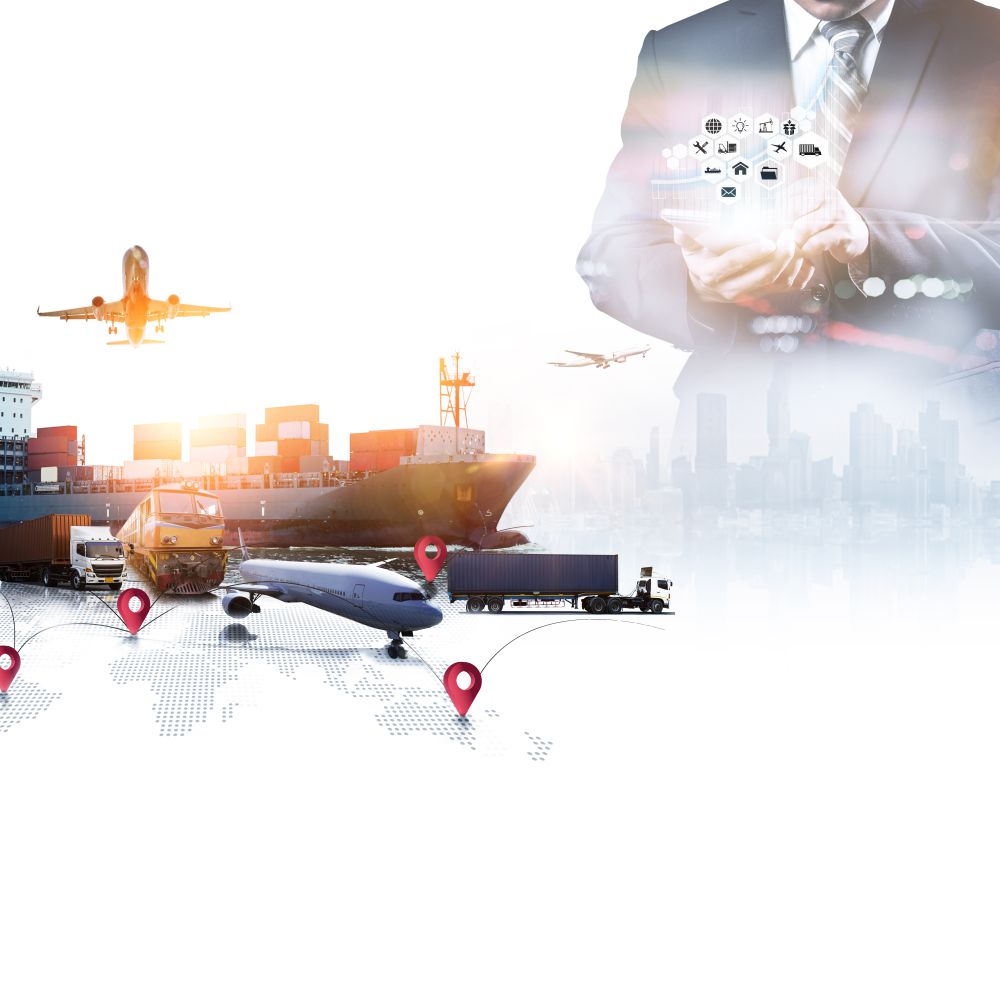For India to maintain its position as a leader in a post-COVID world, it will need to maintain low rates of infection, save lives at home, and avoid negative growth. Strategically well placed in the Indian Ocean & willing to play a role in providing maritime security, humanitarian assistance, and disaster relief, India is increasingly seen as a valuable and responsible player to uphold the international order. Our second-panel discussion during Celerity Supply Chain e-conference & Awards 2021 threw interesting facets that India Inc. is adopting to lead the growth story and making a case for Global Leadership with the supply chain leading the battalion. Fantastically moderated by Sanjay Desai, Co-founder & Regional Director, Humana International, this panel indeed made some impressive revelations gained during the COVID-19 pandemic and companies’ strategies to deal with challenges in the post-pandemic world. An excerpt…
Sanjay Desai, Co-founder & Regional Director, Humana International
“India will need to demonstrate that its international commitments to inclusiveness & humanity are applied in its domestic social & political settings aggressively.”
Covid 19 affected countries globally, forcing them to multiple shutdowns, bringing the entire globe to a standstill for more extended periods. It also exposed how much the Western world was over-dependent on China to supply many commodities / daily essentials/ pharmaceuticals, luxury products, garments, clothing, etc. After learning an expensive lesson, global companies have NOW started to seriously re-design their value networks and are looking at viable options like Re-shoring or Nearshoring or investing in ASEAN to develop a parallel ecosystem outside of China. This is playing in India's favor. It provides a more significant opportunity to take some of the manufacturing ecosystems away from China into India. Realizing this opportunity, Modi Govt announced "AtmaNirbhar Bharat Abhiyaan" (ANBA) in mid-2020 with a stimulus package of US$260 bn. The most crucial element of ANBA is that India will identify and promote industries and sectors with the potential and capability to scale up and be globally competitive. Let us look at a few significant elements in India's new role in Global Trade in the coming decade…
Food Aid to West Asia: Indian exporters of agri-goods have seen a marked increase this year. India stands a good chance to benefit from the shift in global trade triggered by the pandemic. It could fill in the vacuum by supplying West Asian countries which traditionally relied on China.
Vaccines/ other medical essentials: India has always been a large producer of vaccines for its domestic market and the rest of the world. That is an important fact whose strategic value has been highlighted by the Covid pandemic. India will cash on this opportunity to become the number one producer of vaccines globally in the next 5-7 years.
Space technology, solar power / green energy: India is a space power, an Information and Communications Technology power with aspirations in green energy to become a solar power. All these combined, India has a massive potential to strike collaborative partnerships with emerging markets in Asia and set the ecosystem ahead of other nations.
The QUAD: Officially, the "Quadrilateral Security Dialogue" comprises four countries: the United States, Australia, India, and Japan. The objectives of this partnership are 'deepening the ties and advancing practical cooperation' in areas such as promoting a free and open Indo- Pacific region, combatting the COVID-19 pandemic, addressing the climate crisis, and partnering on emerging technologies and cyberspace. QUAD opens new doors for India.
IT / Technology & Co-working / shared space: India has always been an exporter of IT/ Technology products and an expert in managing call centers/ back offices in India. Added to this is the recent trend of WFH, which has flourished a new concept called Co-working or shared space. Combining these three elements, India can create an ecosystem to attract Global Organisations who want to reduce their real estate costs and set up their virtual or back offices in India by providing supreme end-to-end facility/ office management experience.
Raviraj RODRIGUES, Global Supply Chain Transformation Director, Alstom India
“It is only through localization that companies can both keep their costs in control and yet be flexible to meet tight timelines.”
Please share your view on the 'Make in India' initiative and Alstom's stance over this…
I will share with you the case study of Alstom India Operations. Interestingly this is similar to the Dual Circulation Economy that China is espousing these days. The dual circulation model in China has been envisioned to create a robust domestic market, with an intent to promote consumption and growth. It's called Internal Circulation and is China's strategic approach to adapting to the new risks perceived concerning global trade. At the same time, China will continue to engage with the global community to use its capacity to export products at a competitive price and thus keep China as a manufacturing powerhouse. This is called External Circulation. China believes that both are needed to keep China's economy stable, hence the Dual Circulation economy.
If I were to look at it from Alstom India's perspective, we too have adopted the same strategy some years ago to enhance our growth momentum. We have set up plants in India both for the domestic and exports market with a 50:50 share. Our reasoning is that India is a highly competitive market and, more so, the government infrastructure projects, where the lowest bidder gets the business. To survive in such a market, one has to be highly cost competitive. This can be achieved only if we set up a base in India with domestic manufacturing and distribution capabilities.
Localization of inputs follows as the next logical step. It is only through localization that companies can keep their costs in control and yet be flexible to meet tight timelines. For instance, for our Locomotive business, we had to indigenize 90% of our inputs to meet cost targets that came with the tender that we won. This was the only way to win the tender. This is our equivalent of the Domestic Circulation. In the case of exports, we also need to deal with global customers who expect the latest technology to be incorporated into the products we make for them.
This gives the much-needed exposure to our design teams, who can absorb these technologies and deploy them in the products we make for India. However, we must provide them at a very competitive costing for Indian customers. This creates the opportunity to deploy these technologies at "Indian Costing." Interestingly, once we have cracked the Indian costing, we can also offer that costing to our global customers, which makes us competitive in the global market. This is the Export Circulation and combining both gives us a virtuous cycle for ourselves. Over a period, I have come to a conclusion that if any company that wants to compete globally, they should come to India and learn to sell to Indian markets first. They will become competitive by default.
If we must manufacture in India, in your case specifically, how were you impacted by not having the components of tier I, II & III, which was enabling your manufacturing? Do we already have an ecosystem in place for your industry requirements?
We have a well-established manufacturing ecosystem in India, and most of our tier I suppliers are in India. What we realized during the pandemic, however, is that we did not have a complete view of the supply chain all the way down to the raw materials extracted from the Earth. Thus, while we could secure most of our Tier I and II supplies, many critical components for our tier II suppliers and even tier I were imported. While it's impossible to localize every part (and neither is it recommended in today's global network for an efficient supplier base), having a view on the supply chain and de-risking the supplier base will be a key focus area for us now.
It's here that we have begun to realize that we do have the capability to manufacture most of our components in India. However, most of that capability is with smaller players doing niche manufacturing, and we, in India, do not have a robust India Centric MSME database in place. Thus, most of the supplier discovery happens by serendipity and not necessarily in a structured way.
That's a new realization, and if we or an industry body could create an unbiased MSME database and if those MSMEs could be developed using Industry 4.0 technologies, we could be largely self sufficient with in-shore manufacturing for our components.
In terms of India being the 4th largest economy globally, how do you view the impact of Samarth Udyog Bharat 4.0 and how SMEs are leveraging this opportunity?
SAMARTH stands for Smart Advanced Manufacturing and Rapid Transformation Hub. It is a joint initiative of the Dept of Heavy Industry, Ministry of Heavy Industries, and Public Enterprises with the Industry and academic bodies of India. It is an initiative to spread awareness about Industry 4.0 to Indian companies. I believe that SMEs will stand to benefit most from this initiative. This is because SMEs find it most challenging to hire a skilled workforce to run their factories and find SMART Factories easy to operate with a smaller team of skilled workforce. Industry 4.0 is essentially Industry 3.0 with computers interconnected using IoT, Cyber-Physical systems (like Cobots and augmented reality), and the Internet of Systems to create a SMART Factory.
While some dismiss it as a new buzzword and cleverly worded marketing gimmick, I feel it is a shift that will happen to all our factories in the years to come. Most machines generate a tremendous amount of data, which humans may find difficult to analyze and identify trends today. This would now become possible with a combination of Big Data & ML in Industry 4.0. It will throw up issues, which need attention and allow manufacturers to focus on only those issues better. An example that I read up was about a South African Gold mine that was able to identify a problem with the oxygen levels during the leaching process using the data from sensors in its equipment. Once they fixed this problem, they were able to increase their yield by 3.7%, which saved them $20 million annually. We are talking about real solutions here.
SAMARTH Udyog has created five centers of I4.0 that would become a common platform for industry 4.0. This will help members network and share each other's resources so that the utilization of resources is maximized. This government initiative deserves industry appreciation. I now see a gradual shift of SMEs moving to I4.0, and they are better tuned to changing market dynamics and implementing technologies in their operational processes. Like I said earlier, SMEs have the biggest challenge in recruiting human resources to analyze data and find smart factories to operate. This is where the SAMARTH Udyog Bharat 4.0 could play an enabling role. This initiative will help SMEs identify where they can use smart manufacturing & support and can help us leapfrog to the next manufacturing level.
Leveraging our SMEs (which do close to 90% of manufacturing) and their 'Jugaad' attitude, i.e., 'Do more from Less,' is in my view the best approach India can take to become a manufacturing hub. Countries like China started small-scale manufacturing in the 80s, but today it is the manufacturing superpower. Industry 4.0 could be the gamechanger for India if done right.
Vickram Srivastava, Head of Planning - Global Supply Chain, SUN PHARMA
Kindly enlighten us about the ‘Make in India’ movement with regards to the pharma sector?
The Pharma sector is a highly regulated market, so any source change is both costly and time-consuming. Having said that, de-globalization is something that pharma supply chain professionals have also started taking cognizance of. China is the factory to the world, but India is the pharmacy of the world. When it comes to raw materials/APIs, our reliance on China is exceptionally high. In the case of any unwarranted disruptions, pharma companies get poorly impacted, be it COVID-19 pandemic, port congestions, pollution control boards forcibly shutting the Chinese factories, so on. To make in India in pharma, we need support from the government and local bodies in terms of infrastructure creation so that we get the economy of scale and start competing in the global market. In the early 90s, India was probably importing 30% of its APIs from outside India. That number has gone up to 65-70% today. Over the last two decades, the number has more than doubled. We need to do something to reverse the trend. It's going to be a time-consuming and lengthy process.
Over the years series of technological advancements in China have given companies an edge to manufacture specialty chemicals. With that, they have had colossal infrastructure support and benefits provided by the government, which have helped them scale up the volume and brought them to economies of scale. Most of the bulk chemicals that we are now importing were getting manufactured in India in the '90s. Over the years, due to better pricing and availability, sourcing has moved to China. Now the Indian government has also realized the crucial importance of the value chain. The government's PLI initiative is undoubtedly a step in the right direction. The pharma and medical device industry have been allocated about US$2 bn over the next five years to encourage entrepreneurs and manufacturers in this space to invest, and the government is willing to support them on this journey. De-globalization is a reality, and companies and governments need to come to terms with it sooner. De-risking supply chains is a great start to move ahead in this journey of de-globalization.
What is India's potential to take Industry 4.0 further in the pharma landscape?
Not just India, the entire pharma industry around the globe is somewhat laggard when it comes to adopting Industry 4.0. Because we are a highly regulated market, the controls around continuous manufacturing and batch quality monitoring have been a hindrance. But the scope and potential of advancements in technology have made 4.0 a reality to reckon with. We are already seeing a lot of headway being made in production control technology, R&D, and overall supply chain monitoring, and management. I firmly believe that in the 'controlled,' 'contained,' and 'connected' world that we live in today, industry 4.0 will be a great enabler in ensuring more efficient and cost-effective ways to deliver life-saving drugs to the 7+ billion people around the world.
Vinod Mathur, VP – Product Management, Blue Yonder
How can India leverage this opportunity to create value and a competitive advantage in the global market by manufacturing for others and being a global factory eventually?
Today it isn't easy to differentiate between a physical product and a technology product. Even cars today are more of a computer, which is driving you around as opposed to what it used to be about 10-15 years back. In both these sectors (technology and manufacturing), my experience has been that we usually struggle when it comes to product design. We have many established companies and startups providing services. This competitive advantage has taken us to a certain level. Our capabilities as far as benefits are concerned are very well accepted by the world, now we must bring the same leadership in design skills. Working with a product business model takes a lot of risk-taking ability. Our incredible talent is moving out of India and is offering its design prowess to manufacturing companies in other parts of the world. We need to leverage such innovative talent somehow and strengthen our design capabilities. We have numerous product design innovations at the grassroots level, but many of those do not make it to an organized corporation for the scale they deserve. These areas should be our next big challenge that companies must take to ensure an all-encompassing growth and make India a true manufacturing superpower.
How can Blue Yonder play an enabling role in making it possible?
We have come up with India-specific offerings because one of the key learnings gained over the span of my professional career is that something that works in the European or North American market may not work the same way in India. We have finetuned and created technology offerings that are more relevant to the Indian ecosystem. Along with our partners, we have also localized tracking mechanisms to suit our Indian customers' needs, such as SIM-based tracking rather than a smartphone-based GPS which might be hard for a small fleet owner to afford.
How are the global supply chains adopting the risk mitigation strategies post-pandemic?
Risk mitigation is a strategy that has always existed if we look at the top performing supply chains globally. These companies always have a plan B in place. The scale of a pandemic that we witnessed, even the plan B, was not enough. Risk mitigation should be a part of systematic planning rather than a one-off exercise. I know of many Indian companies that have a proper risk mitigation plan in place. Blue Yonder helps companies analyze & evaluate the impact of a scenario and develop an alternative plan. Building redundancies into the system is also part of the risk mitigation strategy.
Himanshu Maloo, Supply Chain Head – Pharma, Udaan
How are the supply chain horizons changing?
All of us have been talking about strategy and agility for so many years now, but I think this is the best time to realize the impact closely. If we reflect upon the last 18 months, we clearly see the horizons of our strategy have been changing. Earlier, we used to plan 5-10 years in advance. Now the strategy horizon has been reduced to 6 months to one year, with the pace at the world has been changing.
Such fast-changing dynamics call for a lot of agility in executing things faster. The important thing is that one must keep driving strategy into implementation in a shorter period; Fail fast but keep moving on correcting. Keep learning from the mistakes but keep improvising. This is how I feel the whole horizon of strategy is changing and calls for greater agility for all of us. In the last 18 months, we have already moved 4-5 years ahead than no one had even imagined in adopting technology. This is the perfect example of being agile enough to work with changing times.
It's more about being able to meet customers' demands. How can the supply chain play a critical role in developing new competencies?
All of us are working for business and customers' satisfaction. It's no more a supply chain role that we are limited to. Competencies need to be customer centric to develop skill sets that can help us deliver the last mile of customer experiences. When we bought groceries from the market a few years back, we never thought we would start buying them online. Earlier, we used to place an order today and receive deliveries tomorrow, but today it has been express 90 minutes delivery. Now companies are even talking about delivering groceries in 10-15 minutes. This is how the back end has been matched to deliver goods as per customers' changing behavior and expectations. As customers, we aren't going to be happy if someone says that the order will be delivered the next day. All these require a full-proof back-end supply chain in ensuring that whatever a company promises to deliver gets delivered. That's where it becomes imperative to start thinking innovatively.
This is the NEW NORMAL now, which we must embrace to survive. In the last 18 months, many companies had to change their entire business model, and those who didn't bend down in tune with the customers' requirements are getting vanished.
Rajat Sharma, VP – ISCM & Customer Service, Hamilton Housewares Private Limited - India
What are the challenges that have been faced in delivering products through e-commerce on time every time?
Yes, India has seen a lot of flux on the online channel. A massive set of our customers and consumers have moved on to the online channel. While it was not just an easy way to get things, it was perhaps the only channel to get the desired products delivered at your doorstep during the pandemic. Fortunately for us, as an organization and country, online sales were introduced a couple of years earlier before the COVID-19 pandemic hit us. Let's be honest… COVID-19 has been a massive booster for this channel. As all of us have adopted this channel, we also faced challenges.
First and foremost, we were relying on Amazon and Flipkart to ensure last-mile connectivity. We have never gone to the depths of understanding the challenges of the last-mile delivery, especially in the non-tier I & II cities. That's perhaps has been the biggest challenge for everyone who tried to move from offline to online. I am happy to share that many startups and erstwhile startups have been phenomenal in enabling this transition for all of us. Now the optimization of the last mile freight is going to come along the way for all of these organizations because as they can absorb data, which is tertiary data, and then define patterns, segments, and heatmaps in their territory, it's when they will be able to get to defining where do they need to go from here on, the FCs, delivery partners, traffic forecast, etc.
The world is expanding. Other than the last mile, I think for many of us who were in the offline channel, everything we did was always a part of the supply chain. In the online channel, the most significant change is that we are delivering directly to the consumer, which encompasses a whole set of responsibilities – right time, right product, returns management, customer service, managing order experience, to name a few.
Additionally, e-commerce platforms such as Amazon, Flipkart, and Cloudtail have the economies of scale to create these large FCs, so companies can imagine the complexities such scenarios bring. That's where the strategic vision of the organizations has made the differences in the result. We had thankfully chosen to take this path before the COVID-19 era. Hence, we were able to capitalize on the opportunities.
What's your take on reverse logistics and the value it possesses?
Return logistics in the erstwhile systems was very much dependent on the partners. With the advent of channels such as online and retail, the return percentage is quite sizable. The 'No Questions Asked' return policy has necessitated supply chain teams to emphasize the cost attached to the returns alongside the insight that you draw from returns management. The data around reverse logistics is bringing a lot of early demand sensing, early feature sensing, early change of consumer buying behavior, etc. shared ecosystems with last-mile partners have made it much easier to deal with direct returns from consumers. Yes, it is challenging to manage the returns physically, but the data that reverse data analytics generates balances out those hiccups. Consumer insights, product insights, and buying behavior are the three key elements that return logistics brings with themselves.

Categories

Magazine Editions






















